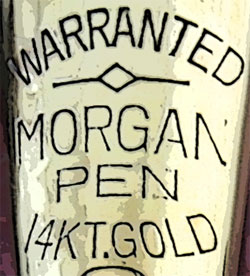PenInHand: May, 2017
A kamakura-bori lever fill fountain pen with Morgan nib c1930s
by Jim Mamoulides, May 21, 2017
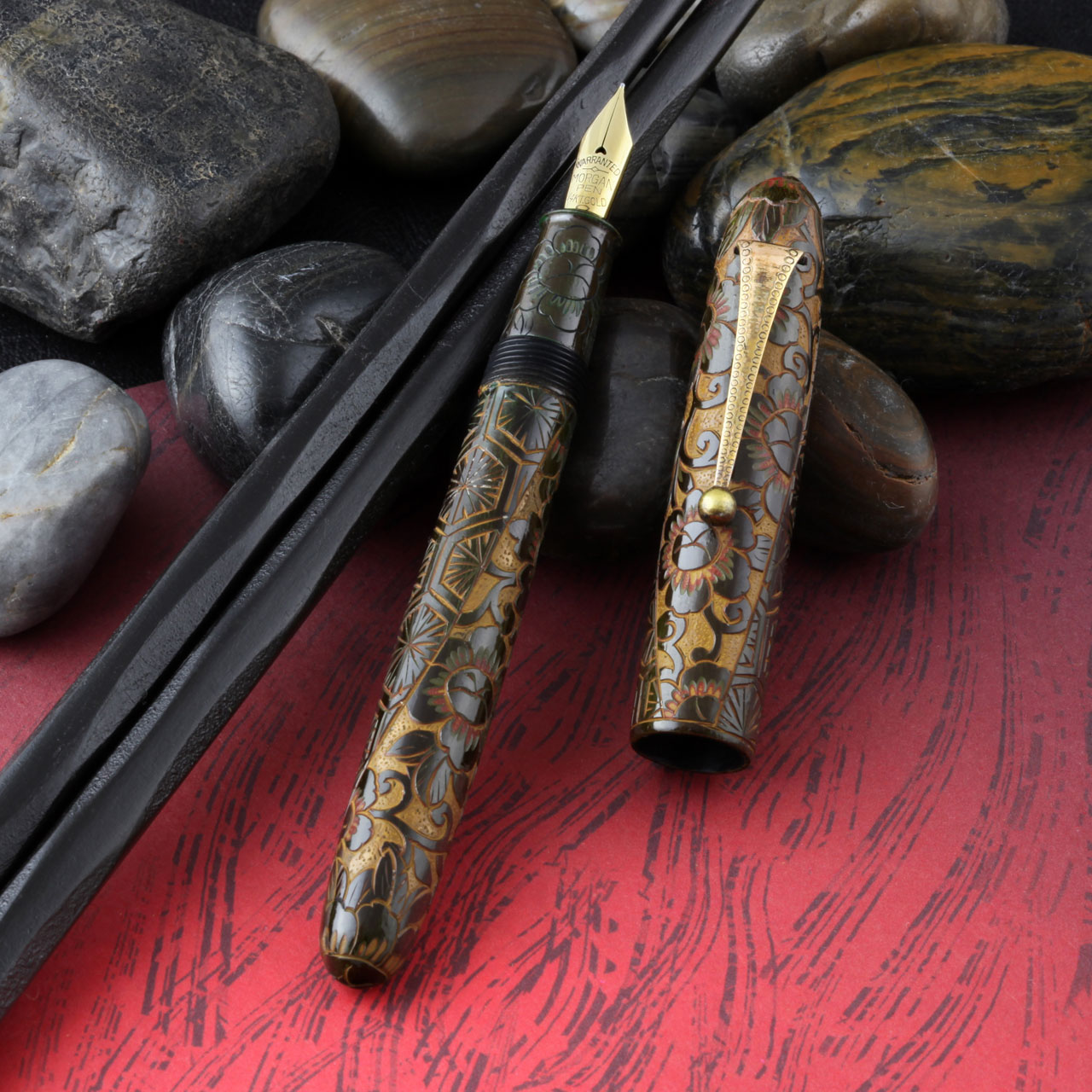 Kamakura bori lever fill fountain pen with Morgan nib c1930s
Kamakura bori lever fill fountain pen with Morgan nib c1930s
Kamakura-bori is a Japanese decorative technique where artwork and patterns are carved in a wood or urushi lacquer base revealing layers of color and are then polished to finish. The art originated in China and was brought to Japan in the Kamakura period (1185–1333). Multicolor effects to enhance the artwork are achieved by first layering different colors of urushi lacquer onto the base and then carving through the layers to reveal the colors in the design. In household items the original item is made from wood, including Katsura (Japanese Judas tree) or gingko, which is then carved and finally coated with urushi lacquer.
Kamakura-bori can be found on pens in Japan from the 1930s through the 1950s. On pens, the artist usually starts with a multilayered urushi lacquer finish on either a wood or hard rubber base pen and then carves the designs through the layers, polishing to finish. Recently some pen manufacturers have revived the technique on a few very expensive limited edition pens, such as the Sailor Tsubaki-Mon made by artist Tadashi Komiya.
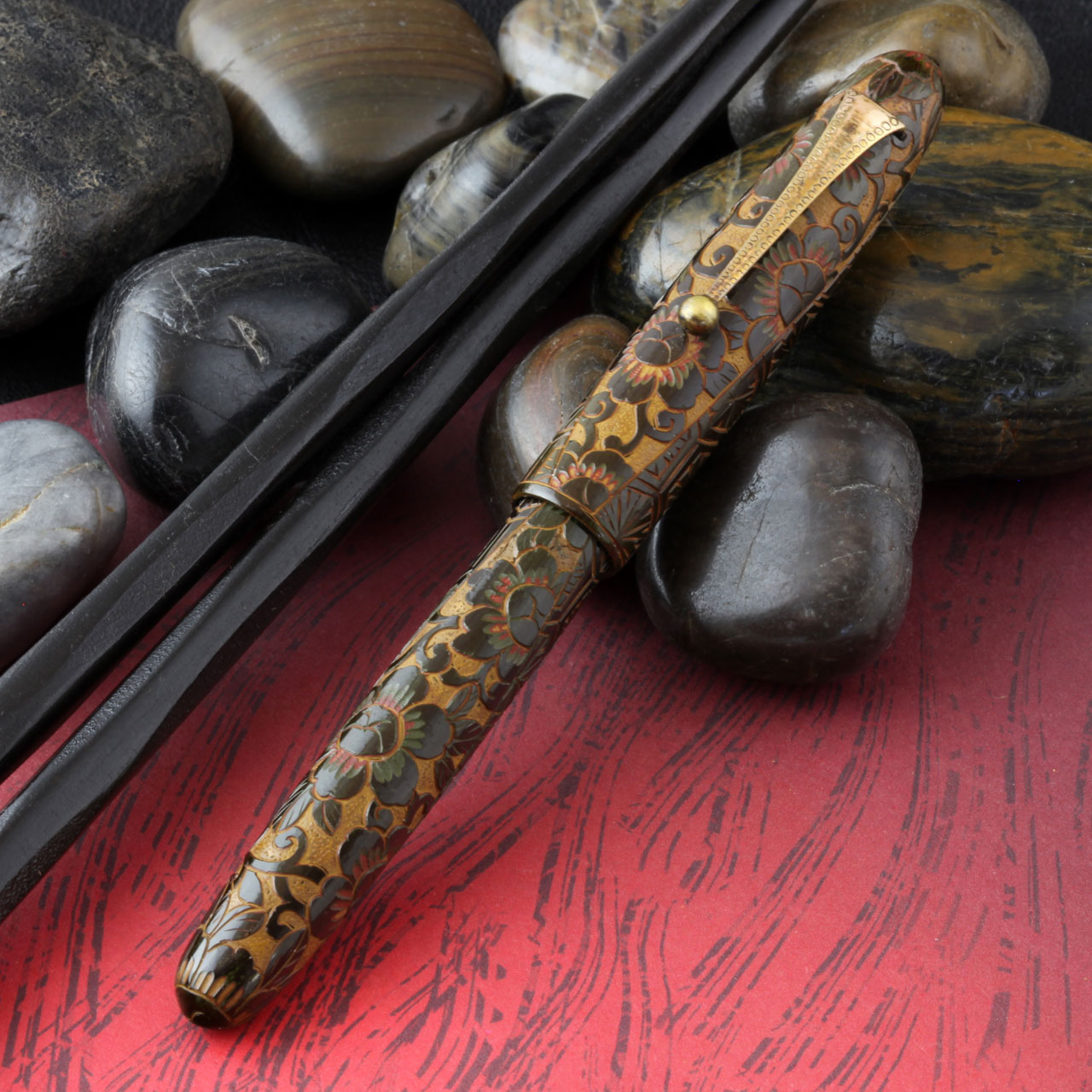 Kamakura-bori lever fill fountain pen with Morgan nib c1930s
Kamakura-bori lever fill fountain pen with Morgan nib c1930s
This highly detailed kamakura-bori pen is from an unknown Japanese pen maker from the early to mid 1930s. It is a lever fill fountain pen fitted with a number 3 Morgan nib. Not much is known about the Morgan pen company, other than Morgan nibs appear on premium quality pens from the 1930s. Morgan may only have been a nib maker.
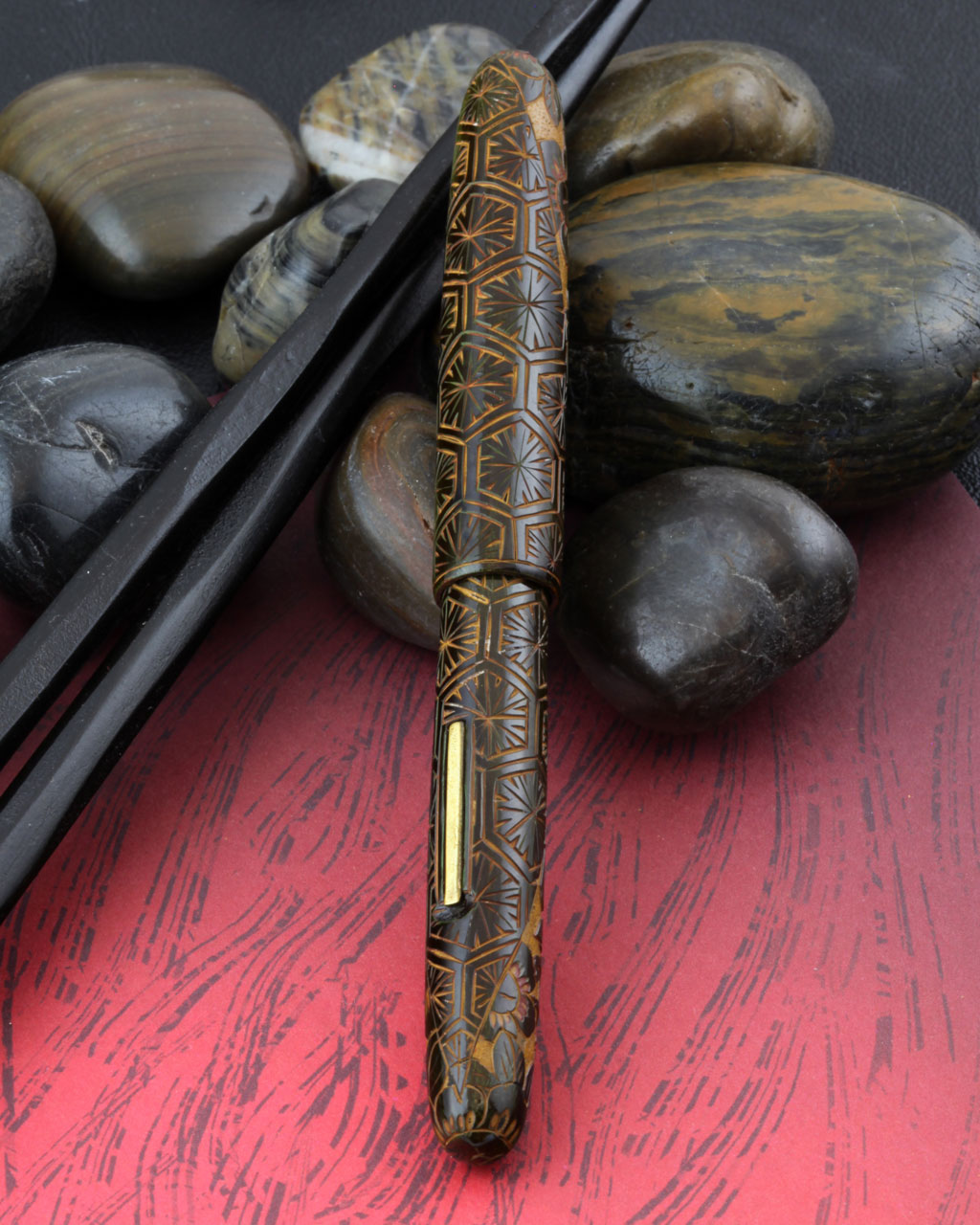 Kamakura-bori lever fill fountain pen with Morgan nib c1930s
Kamakura-bori lever fill fountain pen with Morgan nib c1930s
The artwork is actually two highly detailed high relief designs done as if two different pens were sawed in two and glued together. Where the designs meet, they curve from the top of the cap to the bottom of the barrel in one continuous flow. The artwork on the front design, where the clip is mounted is a repeating pattern of lotus flowers. The carving is done where the flower and petals are dark shades and the background is lighter. The back of the pen is a honeycomb filled with snowflake patterns. The design is also carved into the nib section.
The gold plated clip is unmarked, probably a jobbed part, and the number 3 14 karat gold nib is stamped WARRANTED MORGAN PEN. The pen is average size, about 5 inches long.
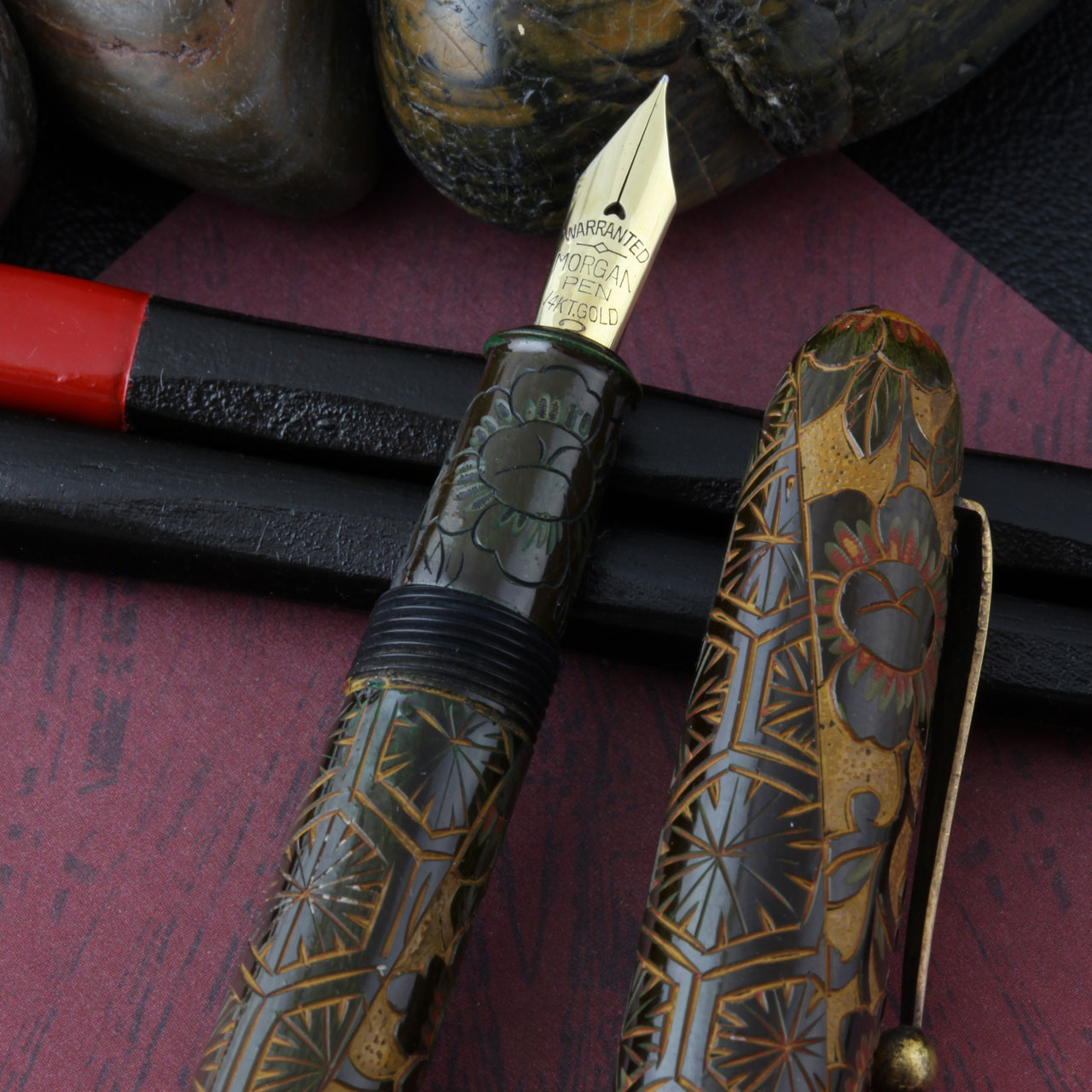 Kamakura-bori lever fill fountain pen with Morgan nib c1930s
Kamakura-bori lever fill fountain pen with Morgan nib c1930s
I've now had the pleasure to see and photograph several Japanese kamakura-bori pens. These are amazing art pieces, often made in small family shops in Japan. Artists would make the pen cap, nib section, and barrel, buy the nib, clip and filling hardware and assemble and sell the finished pen. Many are unsigned, with no way to identify the pen company or the artist. These pens are not common, if not rare in the USA. The pen collecting community in Japan is small, and these pens are hard to come by even in their home country.
Acknowledgement
Thanks to Stan Klemanowicz for loaning this pen for photos.
References
"Collecting Japanese Pens," by Stan Klemanowicz, Pennant, Winter 2006
Fountain Pens of Japan by Andreas Lambrou and Masamichi Sunami, © 2012 Andreas Lambrou Publishers, Epping, Essex, United Kingdom
Japanese Pen Manufacturers - Current and Past, maintained by Stan Klemanowicz on Fountain Pen Network
Kamakura-bori, Britannica.com
Kamakura-bori, Into Japan: the Official Guide, Copyright © Japan National Tourism Organization
Kamakura-bori, Sailor Pen, Japan
Interact
Comments on this article may be sent to the author, Jim Mamoulides


